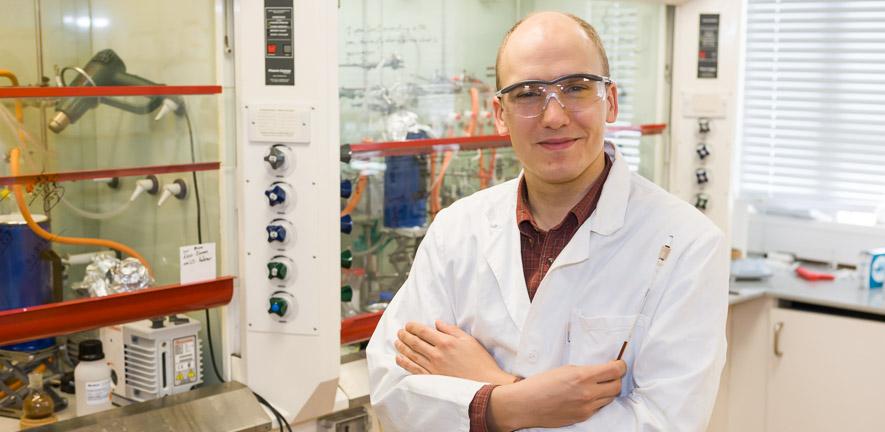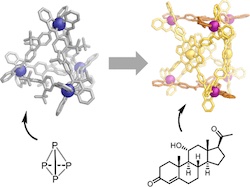
Work-horse molecules
Metal-organic capsules are three-dimensional structures with a defined void in the middle that can trap other molecules inside. These hollow cavities have huge applications potential, such as transporting specific molecules to precise sites in the body, like medicines that target cancer cells. The ability of the capsules to bind specific molecules also enables them to stabilise reactive species, or act as catalysts in similar ways as enzymes.
The majority of work up to now has focused on symmetric cages because they are the easiest to create through self-assembly. The symmetrical structures of these metal-organic capsules limit their uses in comparison to biological systems, however, where molecules often have specific host and guest recognition mechanisms. The frameworks need to be more complex to tackle more complicated molecular recognition tasks, enabling them to approach the elegant functionality of biological processes.
The Nitschke team had wanted to consolidate the literature on the techniques used to prepare these molecular architectures, from the conception of the field in the 80s to the present. There was a need for a cohesive amalgamation of the literature but the demands of research don’t always leave enough time for these reflective tasks. When the pandemic lockdown saw some labs emptied of their scientists or only offering restricted access, this gave the team the rare opportunity to compile this handbook.
More than a pretty molecule
Lower-symmetry cages bind more complex guests (below).
 The handbook, published in Chemical Reviews earlier this year, summarizes principles for the design of higher-complexity, lower-symmetry, self-assembled metal-organic architectures.
The handbook, published in Chemical Reviews earlier this year, summarizes principles for the design of higher-complexity, lower-symmetry, self-assembled metal-organic architectures.
But their work is much more than a list of great molecular designs. “What this handbook is really about is being able to go beyond these structures to figure out how others designed these molecules, how much was luck, and see which design philosophies we can carry to our research,” comments Dr Charlie McTernan who helped compile the handbook over lockdown. McTernan was part of the Nitschke group as a research fellow and is now running his own group at the Francis Crick Institute. “In other words: ‘How can we build more complex molecules more selectively?’”
Personal faves
Since the authors are now well-acquainted with the literature, they have handpicked their favourite structures for this (very unofficial) top three hollow metal-organic architectures.
Professor Jonathan Nitschke
I think my favourite from amongst the structures produced here is 188 in the Review - it was the first really weird and unpredictable one we got, that showed how some of these systems can throw some very interesting curveballs! We ended up making similar structures into ion channels together with Professor Ulrich Keyser's group at the Cavendish, which was fun.
Dr Charlie McTernan
My favourite is Makoto Fujita’s trigonal prism that binds to a DNA base pair. It’s interesting because these two isolated DNA base pairs in a solution won’t interact with each other. However, the prism helps two base pairs come together inside the molecular void of the prism and they thread through the structure stabilising the molecules.
PhD student Jack Davies
My favourite is the structure labelled 114 in this review. This structure illustrates how the incorporation of flexibility into simple ligands can result in unexpected, highly complex outcomes. The Ward group further demonstrate that ligand flexibility can be deployed in different, unexpected ways when small changes are made to the subunits or conditions of self-assembly (structures 108–122).
Research
Charlie T. McTernan, Jack A. Davies, and Jonathan R. Nitschke, Beyond Platonic: How to Build Metal–Organic Polyhedra Capable of Binding Low-Symmetry, Information-Rich Molecular Cargoes, Chem. Rev. (2022), 122, 11, 10393–10437.

